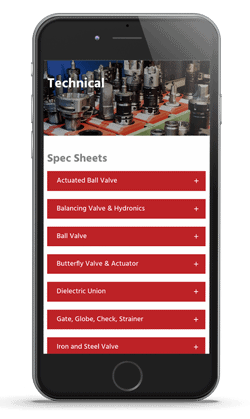The term “PEX” is an acronym for cross-linked polyethylene. The material is used for a variety of industrial components, such as tubes and pipes for valves.
What Are PEX Valves?
PEX valves are highly similar to regular valves. The main difference between them is how they are connected; PEX valves can connect with PEX tubing and piping (i.e., tubing and piping made from PEX) without needing transition adapters. Typical applications for these components include shut-off, maintenance, and repair operations.
PEX Valve Tubing/Piping Material
There are three methods of producing cross-linked polyethylene. The resulting materials are designated as PEX A, PEX B, and PEX C. Each material is processed with different techniques and/or technologies, resulting in unique material characteristics depending on the method used. The differences in properties make each material suitable for different components and applications.
- PEX A. This material is cross-linked using the “Engel” process, which involves introducing peroxides to the polyethylene material before it undergoes the forming process.
- PEX B. This material is cross-linked using the silane process, which is also called steam or moisture cross-linking. The process is performed on the polyethylene after it undergoes the forming process.
- PEX C. This material is cross-linked by subjecting it to an electron beam or gamma radiation. The process is the least commonly used of the three cross-linking methods.
PEX Valve Connection Types
Valves, tubes/pipes, and fittings can be connected in a variety of ways, depending on their design. PEX valves from RED-WHITE VALVE CORP. are available with the following connection types:
F-1807
These connections are manufactured according to the ASTM F1807 standard. The process of installing valves with them requires an appropriate crimp ring and PEX tube/pipe and involves the following steps:
- Sliding the crimp ring over the end of the tubing/piping
- If installing a tailpiece, mounting the union nut over the tailpiece before connecting it to the tube/pipe
- Inserting the valve into the end of the tubing/piping until it stops
- Positioning the crimp ring between 1/8 to 1/4 inch away from the end of the tubing/piping and over the ribs of the valve
- Crimping the crimp ring with a crimping tool
- Checking the crimp was made properly with a gauge
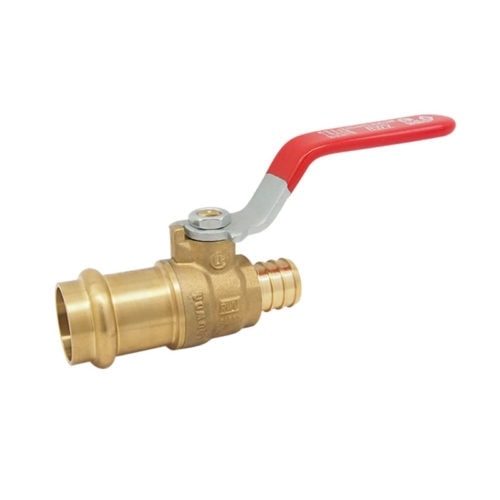
F-1960
These connections are manufactured according to the ASTM F1960 standard. The process of installing valves with them requires an appropriate ring and PEX tube/pipe and involves the following steps:
- Inserting the ring onto the PEX tube/pipe
- If installing a tailpiece, mounting the union nut over the tailpiece before connecting it to the pipe
- Expanding the PEX tubing/piping and ring with an expander tool
- Inserting the expanded assembly onto the PEX valve
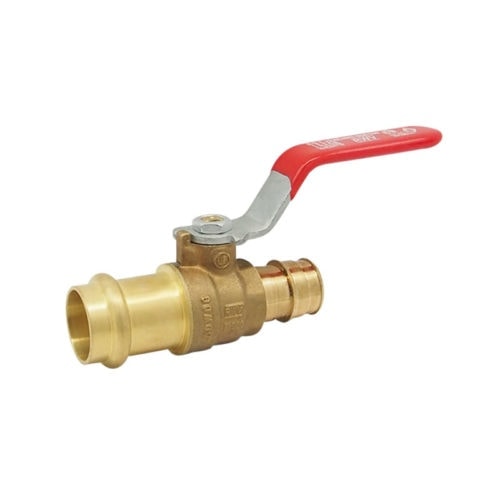
EVERLOC+
These connections are manufactured according to the REHAU EVERLOC+® patented system. Valves with EVERLOC+® compression-sleeve connections require EVERLOC+® PEXa compression sleeves and REHAU PEXa tubes/pipes for installation. Installation of the components should only be performed with EVERLOC+® compression-sleeve tools.
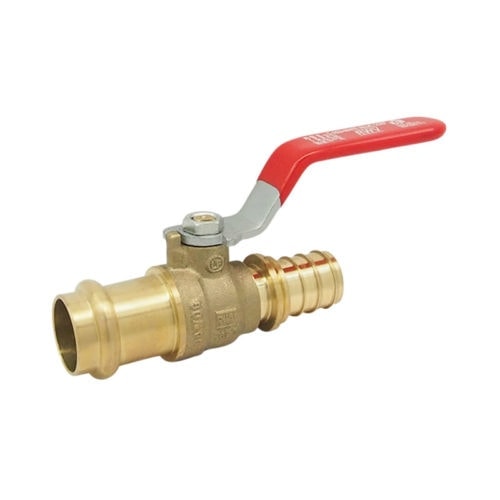
Why Should I Use PEX Valves for My Application?
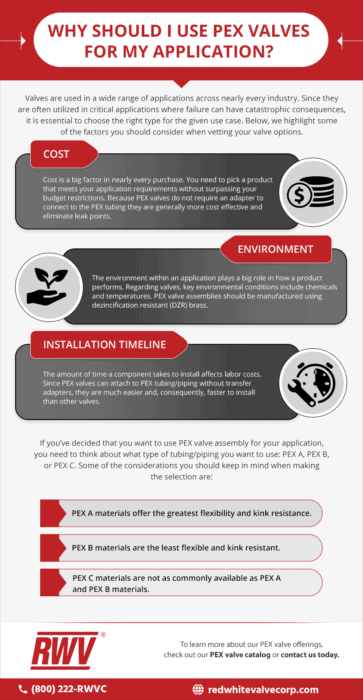
Click to Zoom
Valves are used in a wide range of applications across nearly every industry. Since they are often utilized in critical applications where failure can have catastrophic consequences, it is essential to choose the right type for the given use case. Below, we highlight some of the factors you should consider when vetting your valve options.
- Cost. Cost is a big factor in nearly every purchase. You need to pick a product that meets your application requirements without surpassing your budget restrictions. Because PEX valves do not require an adapter to connect to the PEX tubing they are generally more cost effective and eliminate leak points.
- Environment. The environment within an application plays a big role in how a product performs. Regarding valves, key environmental conditions include chemicals and temperatures. PEX valve assemblies should be manufactured using dezincification resistant (DZR) brass.
- Installation timeline. The amount of time a component takes to install affects labor costs. Since PEX valves can attach to PEX tubing/piping without transfer adapters, they are much easier and, consequently, faster to install than other valves.
If you’ve decided that you want to use PEX valve assembly for your application, you need to think about what type of tubing/piping you want to use: PEX A, PEX B, or PEX C. Some of the considerations you should keep in mind when making the selection are:
- PEX A materials offer the greatest flexibility and kink resistance.
- PEX B materials are the least flexible and kink resistant.
- PEX C materials are not as commonly available as PEX A and PEX B materials.
PEX Valves at RED-WHITE VALVE CORP.
Want more information on PEX valves? Ask the experts at RED-WHITE VALVE CORP. We supply high-quality valves, including PEX valves, to customers in various markets. Our team can answer or address any questions or concerns you may have about these products.
If you want to purchase PEX valves for your operations, we’ve got you covered. We offer a range of PEX valves:
- Ball valves
- Transition ball valves
- Ball valves with drains
- Ball valves with mounting feet
- Ball valves with drains and mounting feet
- Flange ball valves
To learn more about our PEX valve offerings, check out our PEX valve catalog or contact us today.

